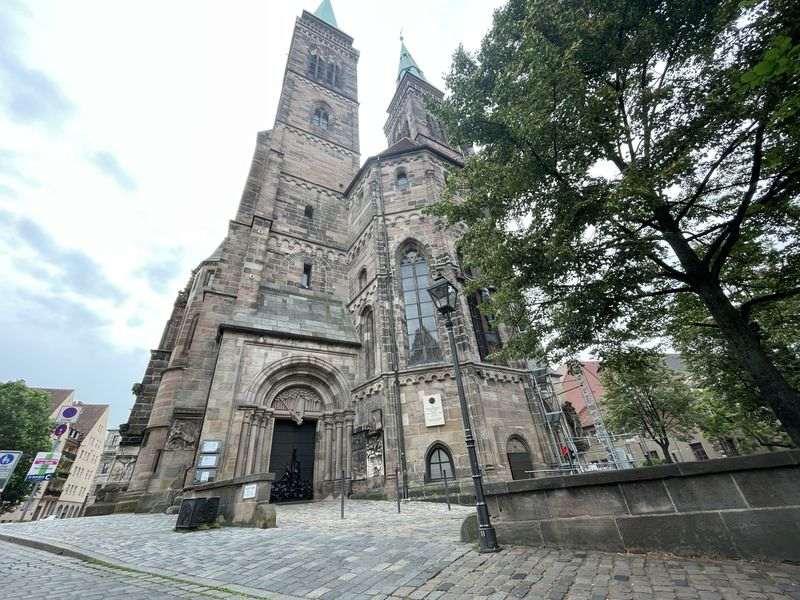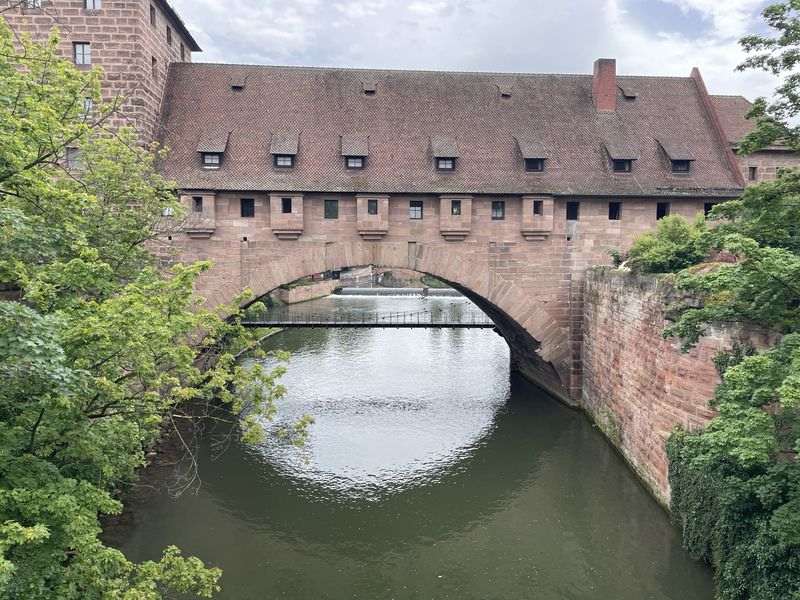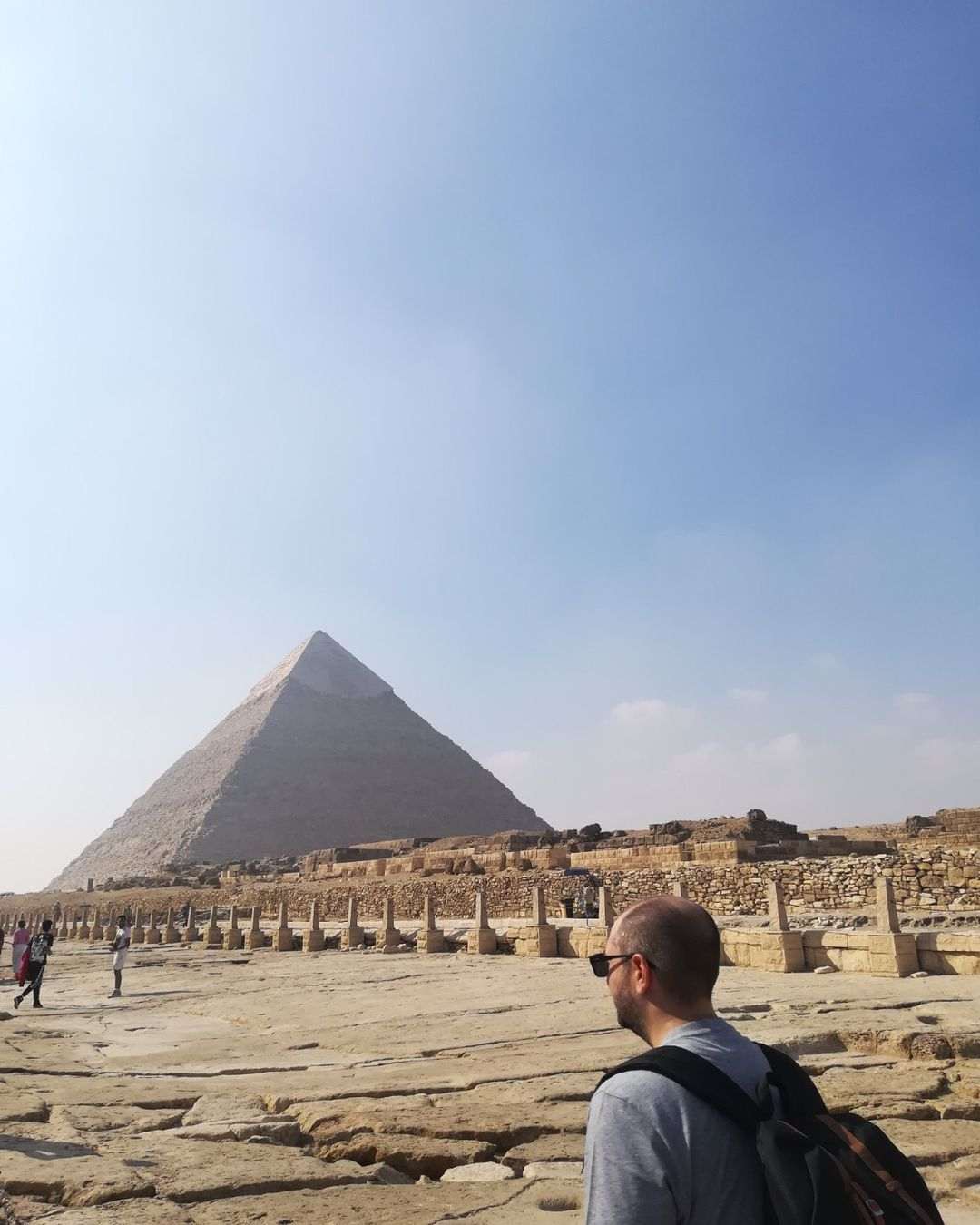
A city full of medieval beauty, rich history and good food! Nuremberg is a special destination that will make you feel like you have traveled to another era.
A few words about the city
Nuremberg is a city in southeastern Germany and the second largest in the federal state of Bavaria. It is built in the Pegnitz river valley and is located approximately 140 kilometers north of Munich. Its population is estimated to be 500,132, with a fairly large percentage of them (2.5%) being of Greek origin! Nuremberg has a rich history, since it was considered one of the most important cities during the Middle Ages! Unfortunately, the former thriving and impressive Bavarian jewel city was almost completely destroyed during World War II! Fortunately, however, the current old town was rebuilt keeping the same architecture, which gives it the feel of another era. It's also considered an eclectic city full of beautiful buildings, artworks and green parks, and is said to have the best Christmas markets in the world! So I have selected for you what I think is worth paying attention to for someone visiting the city for the first time.
Nürnberger Burg
The Imperial Castle of Nuremberg (Nürnberger Burg) is located in the northwestern part of the old city and is considered its top attraction. It is essentially a group of medieval fortified buildings, built on top of a sandstone rock! This impressive 351-meter-high fortification is considered one of the most important surviving medieval fortresses in all of Europe and was the residence of all legitimate German kings and emperors from 1050 to 1571. Noteworthy is the Heavenly Gate (Himmelstor) located next to the Hasenburg tower, the towering and iconic Sinwellturm, the deep well (Tiefer Brunnen) inside the small wooden house in the middle of the courtyard, the imperial stables, the Kastellansgebäude, the Secretariat Building (Sekretariatsgebäude), the Finance Building (Finanzstadel), as well as the post-medieval Himmelsstallung! Many buildings of the castle were completely damaged during the Second World War, but after the end of the war they were restored under the instructions of Rudolf Esterer and Julius Lincke. Today the eastern municipal buildings of the castle (Kaiserstallung and Luginsland) are used as an inn. Finally, many artifacts from the castle's long history are on display in the Imperial Castle Museum, the Bower. There, you will find an impressive collection of medieval weapons and suits of armor, along with saddles and harnesses. Entrance to the castle is free, while if you wish to visit the museum you will have to pay 9 euros!

Hauptmarkt
In the center of the old town you will find the Main Market (Hauptmarkt). This is the central square of Nuremberg where there are various stalls with food, flowers and sweets, and it also hosts some of the most famous sights of the city! The most important of these is the Gothic Church of Our Lady (Frauenkirche), built between 1352 and 1362 on the ruins of a Jewish Synagogue! It stands out for its unique architecture, the artworks from the Middle Ages inside and the impressive clock, which strikes every hour and attracts locals and tourists alike to witness its imaginative ritual! Admission is free.

Equally amazing is the Beautiful Fountain (Schöner Brunnen), which is 19 meters high and was built between 1385 and 1396! It is adorned with forty elaborate sculptures of important figures of the Roman Empire, and it is said that if you can find and spin the two swinging brass rings, you will have eternal good luck!
Finally, during Christmas, this particular square turns into the famous Nuremberg Christmas market, the Christkindlesmarkt! As I mentioned in my introduction, this particular market is believed to be the most important in all of Europe! So if you happen to be there at Christmas time, don't miss the joy of walking among the dozens of stalls there, trying the city's famous sausages and lebkuchen, listening to choirs and bands playing and singing Christmas carols!

Lorenzkirche
Crossing the Pegnitz River, the road will lead you to Lorenzer Platz. Of course, the hallmark of the square is the 14th century medieval temple dedicated to Saint Lawrence (Lorenzkirche). This particular church is the largest in the city and stands out for its twin towers and the large rose window. Its interior is equally impressive, as it is adorned with various works of art, which have come from the wealthiest classes of the city over the centuries. Also, the church organ has over 12,000 pipes, being one of the largest and oldest in the world, since it dates back to 1300! The Church of Saint Lawrence is particularly important for the Evangelical Lutheran Church of Bavaria, since the archimandrite of Nuremberg also works there, who has the honor of always being the one who first addresses the archbishop of Germany when he is elected. Unfortunately, this particular temple also suffered a lot of damage during the Second World War, but fortunately for us, it was fully restored. Entry is free!

Sebalduskirche
The third church of the city worth visiting is that of Saint Sebald (Sebalduskirche). It is the oldest parish temple in Nuremberg, built from 1225 to 1273 as a three-aisled basilica in the late Romanesque style with two choirs. As early as 1309 the original side aisles were enlarged and modified in the Gothic style. This building was also destroyed during World War II, but it too was rebuilt in 1957 and rededicated. Inside the church we find some impressive works of art such as the Madonna in Aureole dating from 1420 and the famous tomb of Saint Sebald from 1508, a bronze masterpiece by Peter Visser and Sons (a silver sarcophagus) from 1397 contains the relics of the saint, and Visser himself is depicted in his leather apron and chisel. Also noteworthy are a Crucifixion group by Veit Stoss dating from 1507 and a huge organ with 6,000 pipes! Entry is free!

Maxbrücke- Henkersteg- Hallertorbrücke
Nuremberg is crossed by the river Pegnitz, which practically divides the old city in two! So to cross from one bank of the river to the other, there are several bridges, stone and wooden, which will set your camera on fire! The first of these is the Max Bridge (Maxbrücke), which is also the oldest in the city, since it dates back to 1457! Originally called the Stone Bridge, it featured three sandstone bays with intricate cast iron fillings, and was given its current name in 1810, to honor the Bavarian King Maximilian I Joseph! Today, the Max Bridge, in addition to being a crossing over the river, is considered an attraction for the city, while also offering a great view of other prominent buildings of Nuremberg, such as the former wine warehouse (Weinstadel).

Nearby, you will also come across the Hangman's Bridge (Henkersteg), which connects the Trödelmarkt and its many shops, idyllically located on a small island in the river, to Unschlittplatz. It is a wooden bridge that was also built in 1457, for the city's executioner, while it was rebuilt with a roof after a flood in 1595.
Finally, in the southwest of the old town there is an impressive pedestrian gate, the Hallertürlein. To connect this gate with the old town and give access to the opposite side of Pegnitz, a bridge was built in 1564, the Hallertorbrücke! Unfortunately, it was also seriously damaged by the flood that hit Nuremberg, while it was rebuilt in 1598! What we see today, however, is the result of the work done in the 17th century!

Weißer Turm- Ehekarussell
What can Nuremberg have in common with Thessaloniki? The answer is simple, they both have a White Tower! The White Tower (Weißer Turm) of Nuremberg is located in the middle of the pedestrian zone of the old town and is one of the many clock towers in the area! When Nuremberg was a free imperial city, time was marked by bells. Private homes had no clocks and the "Nuremberg Egg" (one of the first pocket watches) had not yet been invented. Around 1400, the city had four bell towers: the White Tower, the Laufertor Tower and a tower in the churches of St. Sebald and St. Lawrence. Looking at this particular building, one will wonder why it has this nickname, since today it is not white! In fact it was once really white, having been covered in whitewash! Today it serves as the entrance to the city's underground railway, being one of the most beautiful in all of Europe!

Right in front of it there is also a very impressive sculpture, the Wedding Carousel (Ehekarussel). This is a special work, created in 1984 by Jürgen Weber. It is related to the poem "Bitter-Sweet Married Life" by Hans Sachs, which describes marriage from the early stages of passionate love to exhausting marital strife and death.
Museums
The truth is that Nuremberg is an open museum in itself, but the city has many special museums and art spaces that deserve special attention! I would suggest starting at the home of the famous German Renaissance artist Albrecht Dürer, which is just a stone's throw from the castle. Dürer's highly impressive house (Albrecht-Dürer-Haus) dates from 1420 and he lived there from 1509 until his death in 1528! Of particular interest is the fact that it is one of the few buildings in the city that survived the bombing, while today it functions as a museum dedicated to the artist's life and work. Entrance costs 7.5e.

Equally interesting is the Nuremberg Toy Museum (Spielzeugmuseum), which is considered the leading museum of its kind in the world! Located in a historic old house dating back to 1517, it houses one of the largest and most extensive collections of toys in the world! Characteristically, the permanent exhibition includes over 85,000 objects spanning chronologically from antiquity to the present day. Wooden toys, dollhouses, toy trains and even modern technology toys are just a few of what you'll find there, while visitors can play and try their hand at crafting. And here the entrance costs 7.5e.

The City Museum (Stadtmuseum) is housed in the Fembo House, the only surviving Renaissance house of a wealthy merchant! In this particular museum you will discover the history of the city from its foundation until today, through authentic rooms and traditional furniture, various photographs and interactive audiovisual exhibits. And here the entrance costs 7.5e.

Another museum I suggest you put on your list if you find yourself in Nuremberg is the German National Museum (Germanisches National Museum), which is located off the Street of Human Rights (Straße der Menschenrechte) by the Israeli sculptor Danny Karavan! This museum houses, since 1852, the country's most extensive collection related to German art and culture! In particular you will find more than 1.3 million objects related to the artistic and cultural history of the region, including historical documents on parchment, a collection of 17,000 seals and a wonderful archive of fine art. Part of the museum are also sections of a 16th century chartered house and a former 14th century monastery, around which the museum was built. Entrance costs 10.00e.

Finally, take a stroll through the New Museum (Neues Museum), which specializes in modern art, only opened in 2000 and is a work of art in itself. As well as the Transport Museum (DB Museum), one of the oldest of its kind in Europe! Entrance to the first costs 7.00e and to the second 9.00e.

Staatstheater
The Nuremberg State Theater (Staatstheater) is the largest and oldest opera house in all of Germany! It was built from 1903 to 1905 in the art nouveau style by the architect Heinrich Schelling and it inspires awe and admiration in its appearance. Today, it hosts performances by German and foreign authors, both modern and classical, while performances of ancient Greek tragedies are also staged. Finally, you can still enjoy dance performances and concerts. So if you find yourself in the city and find a concert or performance that interests you, don't miss the opportunity to attend it, since it is one of the best in Europe.

Dokumentationszentrum Reichsparteitagsgelände
Many have connected Nuremberg with the Nazis, a connection that can only be described as accurate! The former imperial city was an ideal setting for the Nazi Party to stage shows of power and spread its propaganda. In fact, it had been named by Hitler the "City of Nazi Congresses", since the annual congresses organized by his party, were held there from 1923 to 1938. After the end of the war, the Nazis were tried for their crimes against humanity in trial, now known as the "Nuremberg Trial", which symbolically took place in the same city that was the center of the Nazi Party. The Nazi Party Congress Documentation Center (Dokumentationszentrum Reichsparteitagsgelände) is one of Germany's most important museums dedicated to the darkest chapters of the country's history. The conference grounds, spread over the vast park around Lake Dutzendteich, have been preserved so that Germany will never forget what happened and the world will not allow it to happen again. The museum graphically captures the actions of the Nazis, giving a complete picture of the National Socialist dictatorship, as well as the history of the political gatherings that took place in this particular building in Nuremberg. This permanent exhibition is 4 square kilometers in size and includes audio tours. There you will be able to visit the historic Room 600, where the Nuremberg Trials took place and the leaders of the Nazi regime were convicted of crimes against humanity. The entrance costs 6.00e!

How to go
Thessaloniki is connected by air to Nuremberg, through Ryanair. With proper planning, one can find tickets starting from €68 round trip! Also, there is the prospect of going to a nearby city such as Munich or Frankfurt and from there approaching the city by bus or train.
Where to stay
In Nuremberg, the last thing you should worry about is your accommodation, as there is enough accommodation for every "valant"! A good low budget option is the B&B Hotel Nürnberg-Hbf, which is considered a center away from the center, as it is located next to the Train Station and is only nine minutes from the old town. It offers beautiful and spacious rooms, at good prices, that will cover all your needs!
How to move
Nuremberg's main tourist attraction is centered around its historic center, which is easily walkable. However, if you need public transport, the city has a very modern system. It has subways, trams and buses, which cover the whole city! Depending on the days you will be staying in the city, I recommend issuing a ticket accordingly
What to eat
The gastronomy of Bavaria and, of course, the whole of Germany is identified with sausages. One of the tastiest of the country is the Nuremberg sausage. These are small sausages 7 to 9 cm long, made from pork with a strong marjoram flavor! You should also try Leberkäsweggla, which is made by grinding together corn, pork and bacon and baking the fine mixture until it looks like a loaf of bread with a crispy brown crust! Equally delicious are Schäuferle (pork shoulder sausage), Lebkuchen (traditional biscuits), pretzels and caramelized nuts! As for drinks, I don't think I even need to mention that you have to drink beer! For coffee and breakfast I recommend Brown’s Coffee Lounge, while to try local flavors Restaurant Bratwurstglocklein!
Useful information

In Germany we travel with a new type of Passport or Police ID, where the details are written in Latin characters.
In Germany the language used is, of course, German. But the majority (especially young people), speak English, so ask for clarification in English.
The currency of the country is the euro.
Nuremberg is one hour behind Greece (GMT +2).
There is no Greek embassy or consulate in Nuremberg, so if you need anything you will have to go to the nearest one, located in Munich, on Möhlstr. 22, 81675 and his telephone number is +49 89 998867-222,-23,-14.
Getting to and from Nuremberg Airport is easy, as there is a continuous metro and bus service that will take you to the city center in just under half an hour!
Germany has very cold temperatures and a lot of snow during the winter months, but Nuremberg is beautiful during Christmas. In fact, it is said that you will find the most beautiful Christmas markets in the world there!
Suggested excursions → Munich, Stuttgart, Regensburg, Frankfurt

If this article seemed interesting or contributed to your quality information, then you can like my facebook page: o_thessalonikios or follow me on instagram!
Mouzakidis Pantelis








